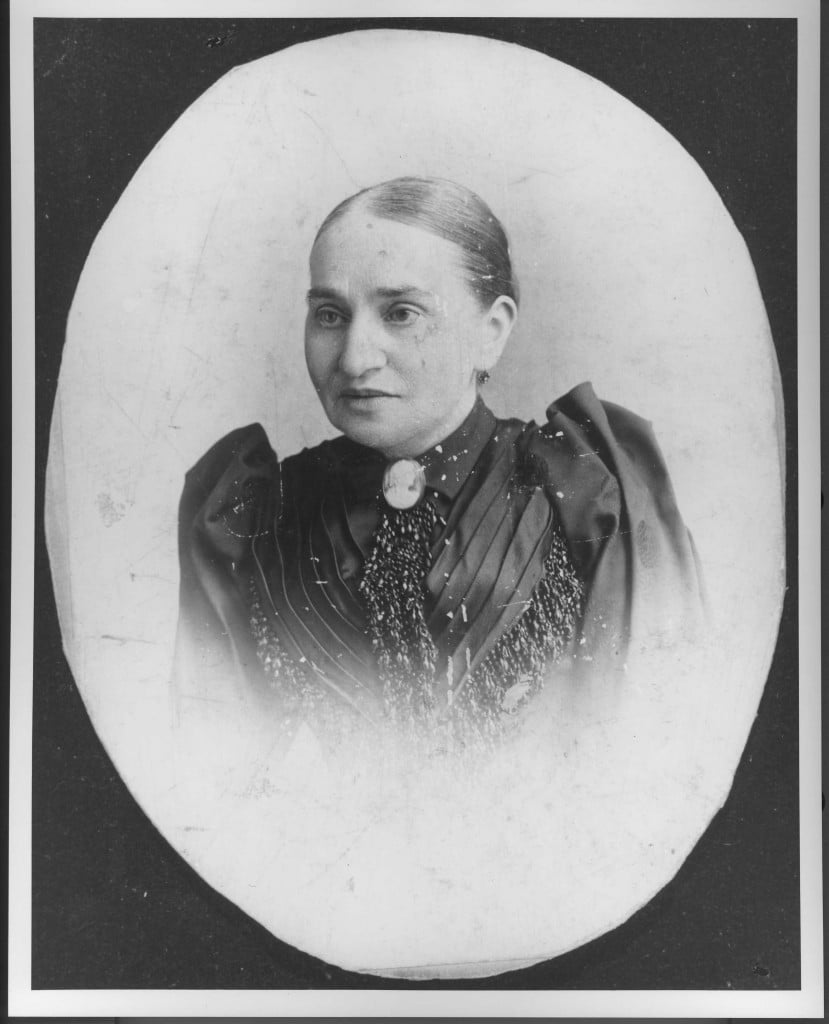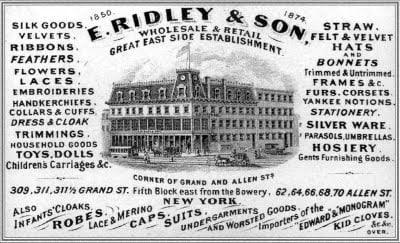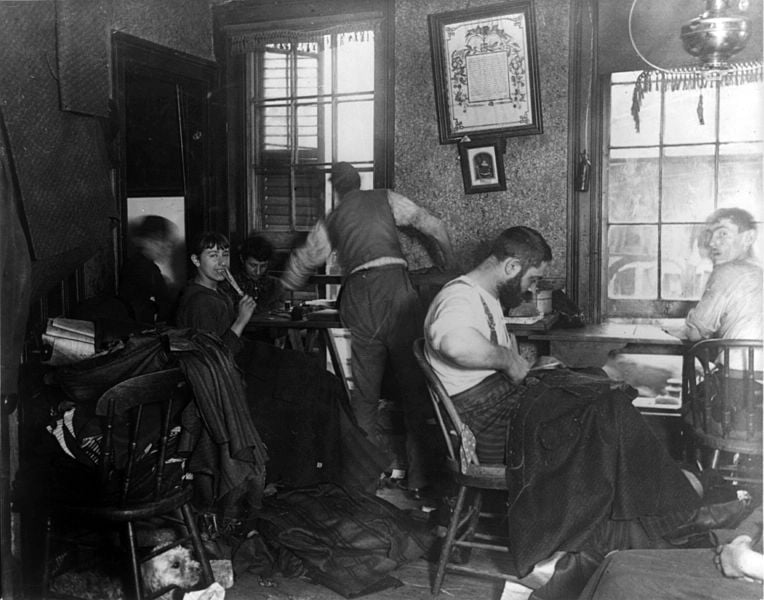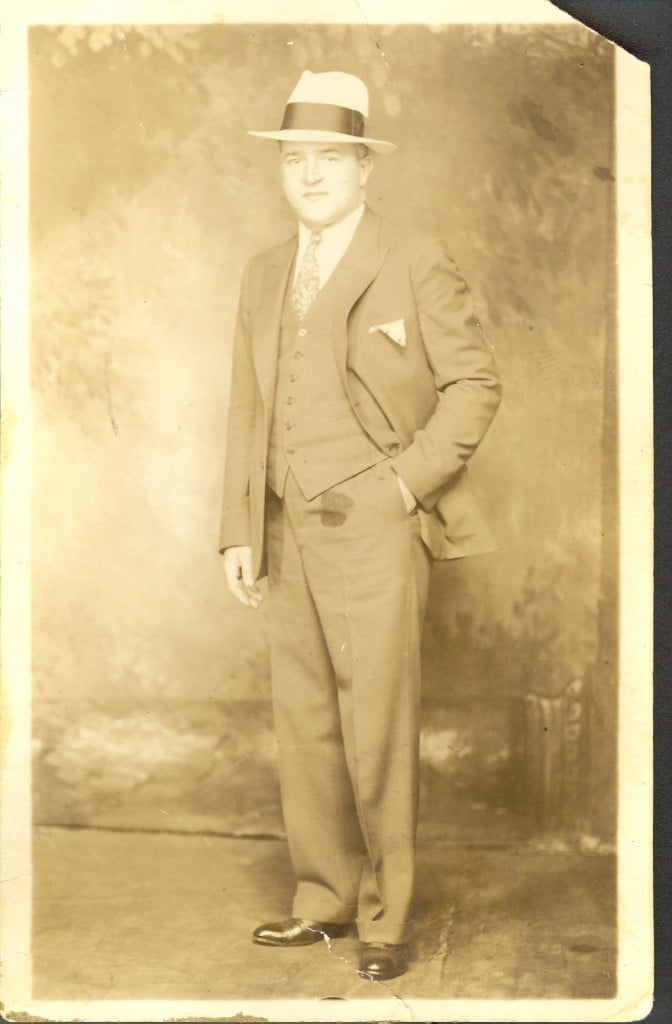Blog Archive
Fashion Week? The LES Has Been Fashionable for Years!
Fashion Week is upon us, which means that New York City is overrun with the beautiful, the fashionable, and the fierce, and has got us thinking about our own (business casual) duds. While a lot of the festivities of Mercedes Benz Fashion Week are held uptown or in fashionable SoHo, here on the Lower East Side, we’ve got over a century of creating and selling our own fashion sense!
The manufacturing of fine men’s and women’s clothes defined the Lower East Side in the late 19th and early 20th centuries, and by the century’s end, it was the selling of clothing that set the neighborhood apart. Of course, a lot changed from 1880 to 1980, and I’m talking about more than hemlines here. The physical act of purchasing clothes is wildly different!
Nathalie Gumpertz, a Prussian immigrant and single mother, earned a living as a dressmaker from her apartment at 97 Orchard Street in the 1880’s and 90’s. Nathalie made all her clothes by hand (with the help of a cast iron Singer sewing machine), and would make the entire dress, rather than just the sleeves or lace, as would be popular in later sweatshops. Nathalie did not sell her dresses to a department store that would then sell the dresses to customers, like many manufacturers did and continue to do today. Instead, the middle- and upper-class women from outside the neighborhood came to Nathalie’s apartment for fittings and alterations, and bought individual garments made just for them.
One can only imagine the bond that Nathalie and her customers must have formed – the intimate act of allowing a customer into your home, especially when you know that the guest is probably from an apartment more grand than your own; the amount of privacy needed to change clothes in someone else’s house; and the honesty that forms between women when shopping for body-shaping garments (To visit Nathalie’s apartment, check out our Hard Times tour.)
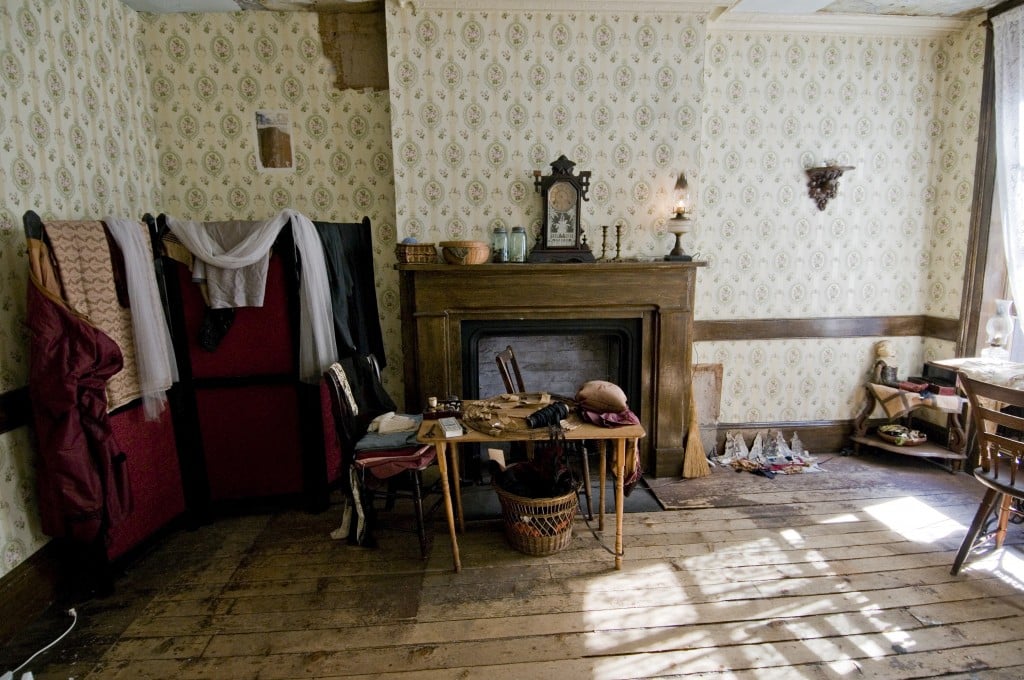
Nathalie Gumpertz worked as a seamstress in her parlor. Clients would change clothes for mending or alterations behind a red screen like the one on the left hand side of the photo.
Eventually, this personal connection between the maker and the buyer fell away. In 1886, Ridley and Sons department store opened; the building consumed the whole block between Allen and Orchard Streets on Grand Street. It was, without a doubt, the biggest shop in the neighborhood.
Like department stores still do today, Ridley and Sons purchased clothing in bulk from the manufacturers, often in-apartment sweatshops located just down the block, and then turned around to sell them at a huge profit to middle-class or even working-class women who wanted to appear in a higher socioeconomic class than they were. The large windows helped to begin the phenomenon known as “window shopping.” The bond between manufacturer and consumer may have been broken, but department stores provided another employment opportunity for young women, as long as they were willing to stand for 12 hours a day. However, working as a shopgirl in a department store with a huge bank of windows and racks and racks of clothes may or may not have been a better paying job than working in a cramped and hot sweatshop, hunched over a sewing machine (To learn more about the garment industry, check out our Sweatshop Workers tour.)
While the department store model has remained popular (even taken a step further with the advent of online shopping), the Lower East Side retained some of the personal connection between seller and buyer through the small shops that were wildly popular in the 1970’s and 1980’s.
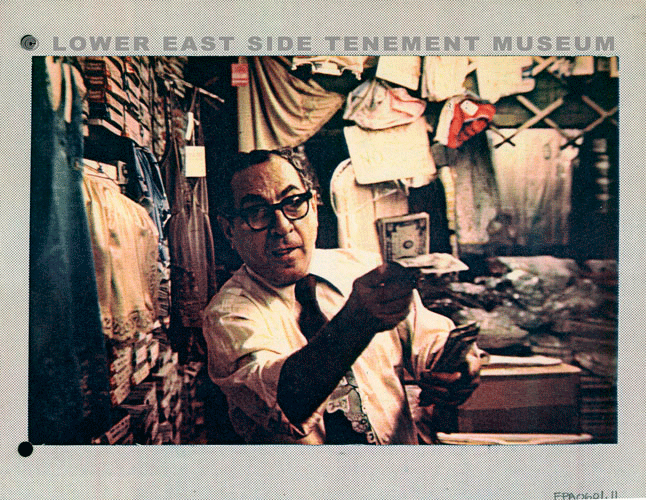
With its stacks of clothes and fast-talking owners, Sidney's Undergarments at 97 Orchard Street was typical of the Lower East Side's family owned businesses in the latter part of the 20th century.
H. Eckstein and Sons clothing store, on the corner of Orchard and Grand Streets, was in operation from 1920 to 1998, and had over 100 employees at its height. In the 1980’s the City was in danger of collapse but the neighborhood was booming and Eckstein’s store was total methodical madness. Clothes were piled everywhere and every price was negotiable, as long as the customer could haggle well enough to get the employee down to their desired price.
The personal connection of the old Lower East Side was back, or perhaps it had never left, within these family run stores. Frequent customers at Ecksteins were treated like family – and that means they gave just as much sass back to the owners as they were given, but they also received special treatment, like the time someone brought in a cheesecake and everyone sat down for a slice. Of course, this style of shopping fell out of fashion in the 1990’s and 2000’s, and the majority of these old-style family businesses have either adapted to modern commerce or fallen by the wayside.
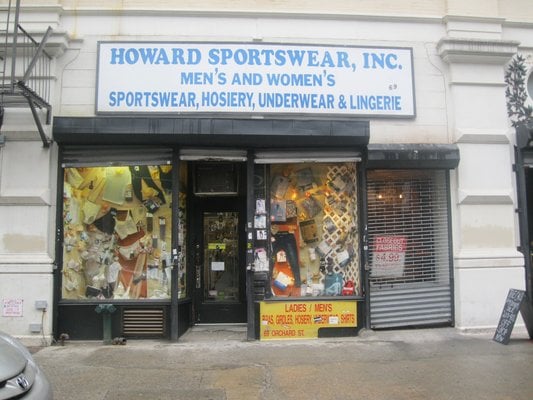
Another business on the Lower East Side, Howard's Sportswear is closing its brick and mortar store to become an online only venture; keeping up with technology has kept the business from bankruptcy in this changing economic climate.
For most of the history of the Lower East Side, high fashion wasn’t on the minds of its inhabitants, who were more worried about their next meal or paycheck. However, in recent years, cool designers and boutiques have opened in the neighborhood, bringing a real sense of fashion to the area. Today’s boutique owners pay homage to the neighborhoods history, and serve to make sure that the future of the Lower East Side is just as dapper as the past.
– Posted by Lib Tietjen
